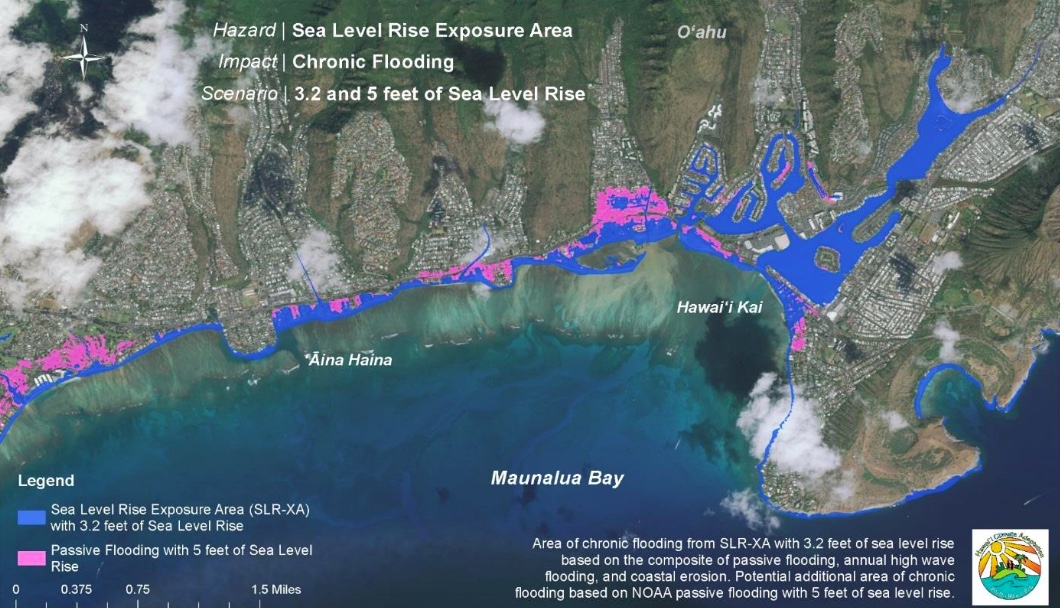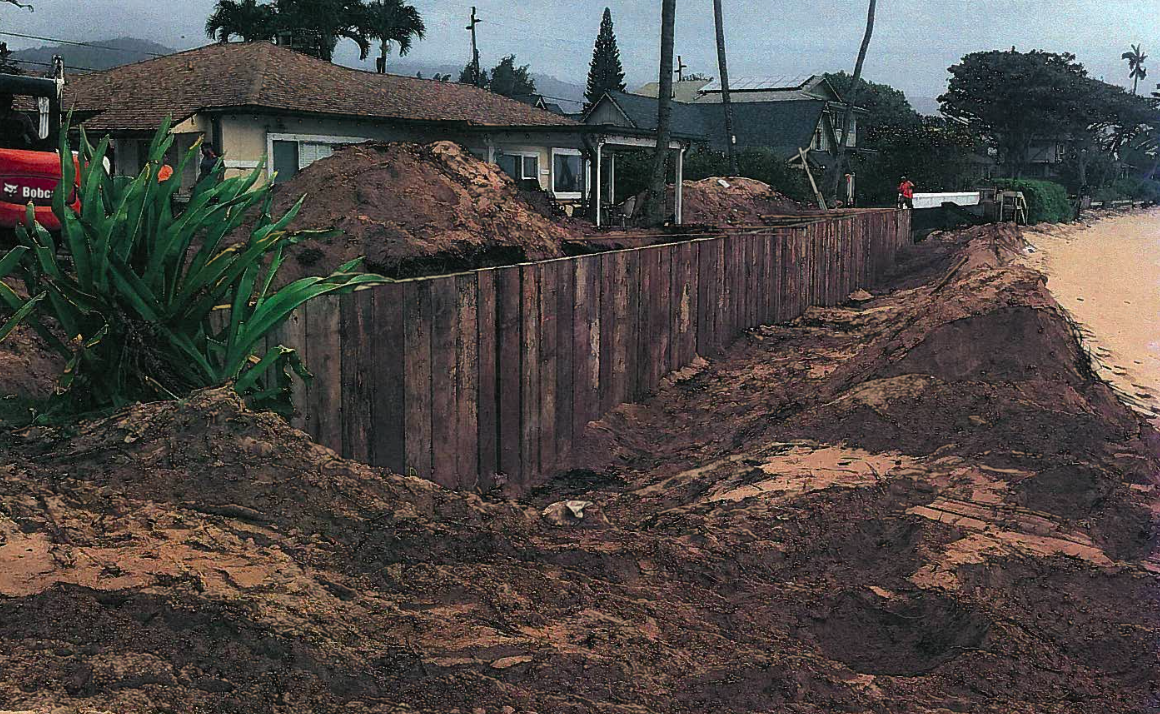On January 24, with aid from staff with the Department of Land and Natural Resources, several legislators introduced a pair of bills regarding shoreline encroachment easements — House Bill 2653 and Senate Bill 3093 — as an alternative to bills endorsed for years by the department. Those earlier bills repeatedly failed largely because they appeared to encourage the construction or maintenance of structures too close to the shoreline in the face of impending sea level rise.
On January 12, members of the state Board of Land and Natural Resources agreed to send a letter to the Legislature urging it to hear bills, carried over from last session, that would allow the board to charge less than fair-market rent for easements covering shoreline structures that, through erosion, now sit below the high wash of the waves.
Because the state has taken the position that it owns the land below the shoreline, the DLNR’s Land Division has for years pursued and secured perpetual, non-exclusive easements for those structures so that 1) the state is protected from being sued if someone gets hurt on them, and 2) the state is compensated for the landowners’ use of public property.
As the Land Division brought more and more of these easement requests to the board, many of them to expand existing easements, some board members grew increasingly frustrated that landowners were being charged — perhaps, unfairly —thousands of dollars or more to keep their legally built structures.
Following the board’s decision, DLNR staff began talks with legislators on new bills. Rather than simply hearing the carried-over bills, House speaker Scott Saiki and several senators led by Les Ihara crafted a compromise that recognized recent findings in the state’s Sea Level Rise Vulnerability and Adaptation Report (SLR report), as well as the importance of encouraging retreat from the shoreline.
“In December 2017, the Hawai‘i climate change mitigation and adaptation commission accepted the [SLR report], which … found that with 3.2 feet of sea level rise by the mid to later part of the 21st century, 6,500 structures would be lost across the state, 20,000 residents would be displaced, and over $19,000,000,000 in damages would be incurred on property and structures. The SLR report further found that the state and counties will need to act upon this threat and develop adaptation measures to ameliorate the social, economic, and environmental impacts of sea level rise. … The purpose of this Act is to support a managed and orderly shoreline retreat strategy,” the bills state.
Under HB 2653 and SB 3093, the Land Board would be allowed to charge less than fair-market rent for shoreline encroachment easements, but only for easements with a term of 10 years or less. The board could extend the term in increments for an aggregate total of up to 35 years.
The reason for allowing only temporary easements is to “enable these landowners to relocate a special shoreline encroachment landward of the shoreline setback line … provided that the granting of this easement shall not be construed as state ownership of the special shoreline encroachment,” HB 2653 states.
The bill had originally called for the encroachment to be moved landward of the “sea level rise exposure area” identified in the SLR report, which refers to areas that modeling projections suggest will experience chronic flooding. While the report recommends that the area be officially recognized as a statewide vulnerability zone, either legislatively or through executive action, “there presently is no sea level rise exposure area officially designated by the state or county authorities at this time,” state Office of Planning director Leo Asuncion wrote in his testimony on the bill, which was later amended to incorporate his suggestion that encroachments be moved landward of county shoreline setback lines.
DLNR director and Land Board chair Suzanne Case submitted testimony fully supporting the House bill (The Senate version had yet to be heard as of press time).
“The goal of this measure is to provide a process for the state and coastal property owners to work collaboratively on dealing with the long-term impacts of sea level rise through a managed retreat strategy. The property owner would be able to maintain the structure protecting their property for a reasonable amount of time, while the burden of requiring a land owner to pay again for land they once owned is avoided. The limited term duration of the easement provides the Board with greater oversight and the flexibility to implement future policies in regards to shoreline protection structures. Additionally, it provides the Legislature with time to evaluate and enact laws to address the impacts of sea level rise. The state can better focus its limited resources on working to find a solution of sea level rise rather than conflict with private landowners,” she wrote.
One testifier, DeMont Conner of the Ho‘omanaopono Political Action Group, strongly opposed the bill, arguing in written testimony that “[t]he state is NOT the caretaker of the affluent homeowners who knew or should have known that natural shoreline erosion was inevitable & that their property would be subject to reduction in the size of their real estate. These shoreline homeowners, especially in Kailua & Lanikai have harassed & erected illegal gates to keep Hawaiians from accessing ‘their’ (the affluent shoreline homeowners), beaches. This BILL is a purely special interest bill to favor the affluent shoreline homeowners & may be unconstitutional.”
(For more background on this issue, see “Bills Facilitating Shoreline Easements Fail For Fifth Year at Legislature,” from our March 2017 issue, and “Land Board to Legislature: Please, Consider Shoreline Easement Bills,” from our February 2018 issue, both of which are available at www. environment-hawaii.org.)
— Teresa Dawson



Leave a Reply